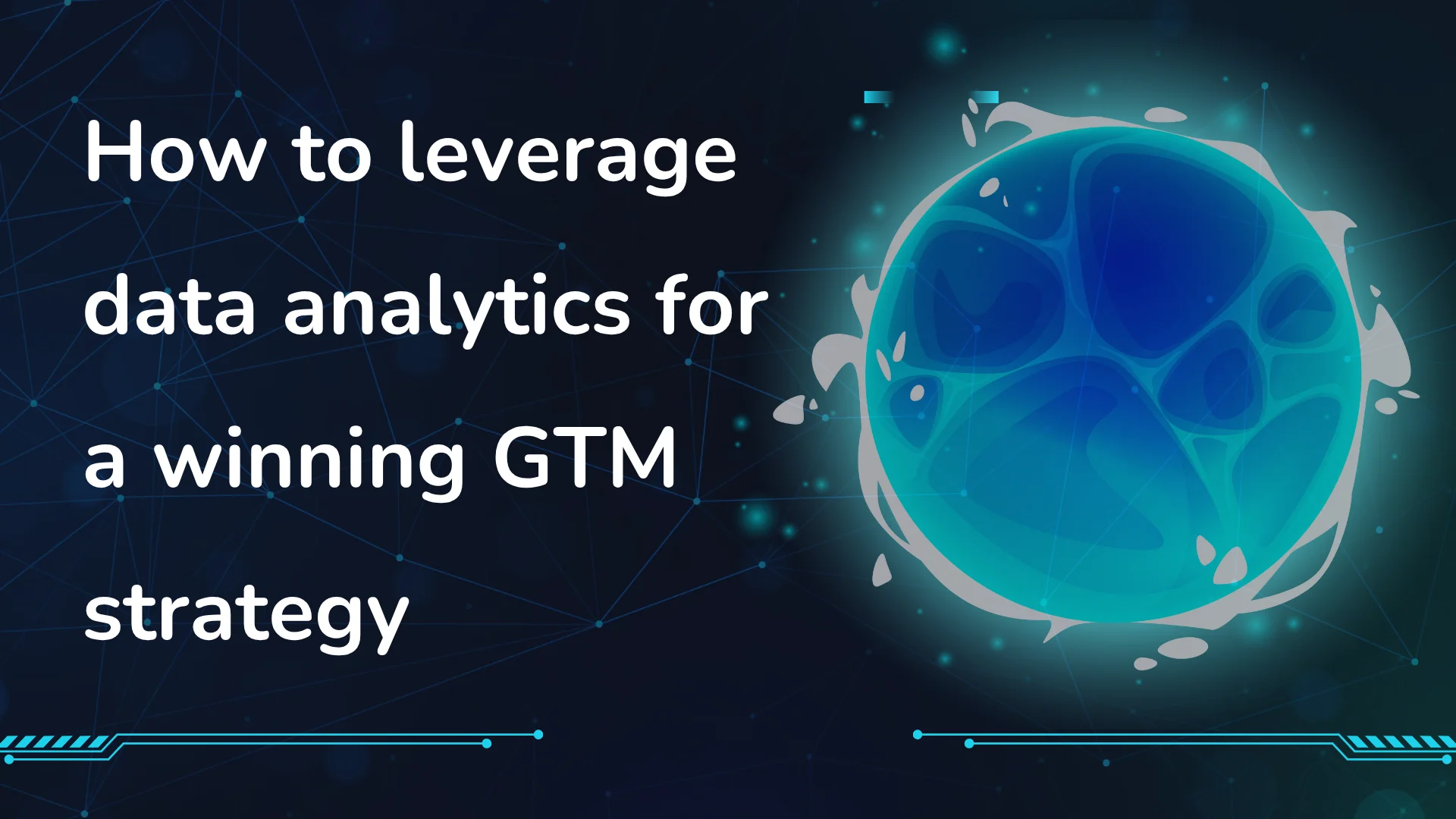How to leverage data analytics for a winning GTM strategy
In today’s hyper-competitive market, startups and established companies alike are recognizing that a successful go-to-market (GTM) strategy hinges on one critical asset: data.
The power of data-driven GTM strategies
A data-driven GTM strategy goes beyond intuition and guesswork by relying on quantitative insights to identify target customers, personalize messaging, and optimize channel mix. Instead of reacting to historical trends, businesses use predictive analytics to anticipate market shifts and customer needs in real time.
Recent reports from Gartner (2024) show that over 75% of high-growth companies embed data analytics into their GTM execution, leading to a 20-35% increase in pipeline conversion rates. McKinsey’s 2025 analysis highlights that firms integrating advanced analytics in sales and marketing improve revenue growth by up to 15%, underscoring the competitive edge data provides.
How data analytics enhances customer segmentation
Traditional segmentation methods segment customers based on static criteria like demographics or geography. Data analytics revolutionizes this by using machine learning to process complex behavioral, transactional, and intent data. This enables dynamic segmentation that adapts as customer behaviors evolve.
For example, startups using multi-source intent data achieve 40% higher lead-to-opportunity conversion rates than those relying on static lists. By continuously refining segments, companies can deliver hyper-personalized content and outreach that resonates deeply with prospects’ current needs and contexts.
Optimizing channel strategy through real-time analytics
Channel optimization is vital for GTM success. Data analytics tracks engagement and conversion metrics across multiple platforms, identifying which channels perform best for different segments. AI-driven tools can then reallocate budget and automate campaign adjustments on the fly, improving ROI dramatically.
Salesforce’s 2024 State of Marketing report emphasizes that companies leveraging real-time channel analytics report 25% higher engagement rates and a 30% reduction in customer acquisition costs compared to those using fixed channel strategies.
Forecasting and pipeline management with predictive analytics
Accurate forecasting is essential to resource planning and revenue projections. Predictive analytics uses historical and real-time sales data, customer interactions, and external factors to produce highly accurate forecasts.
According to Forrester (2025), organizations utilizing predictive sales analytics reduce forecast errors by up to 50%, enabling better decision-making around staffing, inventory, and marketing investments. This clarity helps GTM teams prioritize deals with the highest likelihood of closing and proactively mitigate risks.
Enhancing content personalization and customer engagement
Modern buyers expect tailored experiences at every touchpoint. Data analytics helps marketers understand user preferences by analyzing browsing behavior, purchase history, and engagement signals. AI-driven content personalization platforms then dynamically generate or recommend content tailored to individual users.
HubSpot’s 2024 research reveals that 76% of consumers are more likely to buy from brands offering personalized experiences, and companies employing data-driven personalization see a 20% uplift in customer retention.
Building an integrated data infrastructure for GTM success
To leverage data analytics effectively, companies must build an integrated data infrastructure that connects CRM, marketing automation, sales, and product data sources. This holistic view enables consistent data quality and seamless analysis across the entire customer lifecycle.
Gartner (2024) notes that organizations with unified data platforms experience a 30% faster time to market and 25% higher operational efficiency, demonstrating how critical infrastructure is for turning data into actionable insights.
Practical steps to implement data analytics in your GTM strategy
- Define clear objectives: Establish measurable goals aligned with revenue, growth, or customer lifetime value. Data analytics should answer specific questions like “Which segments drive the highest CLV?” or “Which channels yield the best ROI?”
- Audit your current data sources: Identify where your customer and sales data reside and assess their quality and accessibility.
- Invest in analytics tools: Choose AI-powered analytics platforms that integrate well with your existing stack, offering capabilities like predictive modeling, real-time dashboards, and automation.
- Align teams around data: Break down silos between marketing, sales, and product teams to ensure shared goals and consistent data usage.
- Pilot and iterate: Start small with a single funnel stage or campaign, measure results, then scale successful tactics across your GTM.
Conclusion
Leveraging data analytics is no longer optional – it’s a necessity for startups and enterprises striving to craft winning GTM strategies in 2025. The combination of predictive insights, real-time channel optimization, dynamic segmentation, and personalized engagement powered by integrated data platforms sets the foundation for scalable growth.
By embedding data analytics deeply into your GTM processes, you position your business to anticipate market shifts, engage customers with relevance, and execute with agility. This data-driven mindset empowers teams to convert prospects more efficiently and deliver superior ROI, ensuring your market entry is not only competitive but sustainable.
.svg)
